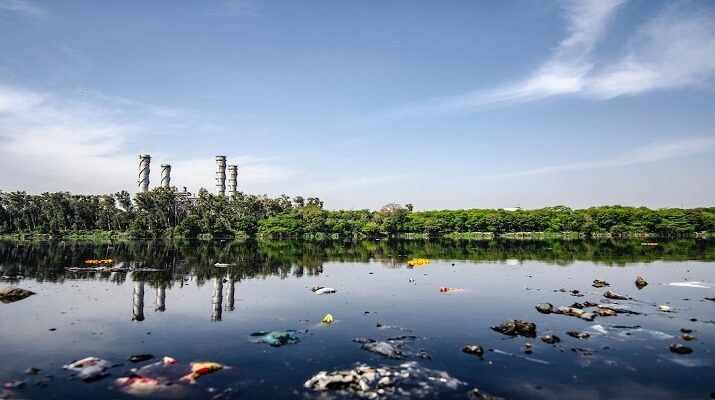Today, the world will stop functioning without industries. In the era of global industrialization, no nation or population can thrive without industries.
However, these industries are also contributing to widespread environmental pollution. IOPScience reports that industrial activities are responsible for causing 61 percent of the world’s overall environmental pollution. Thus, it’s safe to say that the industries we depend on for the development of our civilization are also the ones killing our environment.
In this article, we’ll look at some of the ways industrial pollution is harming our environment, with a particular focus on water bodies.
Table of Contents
Chemical Runoff
One of the most pervasive forms of industrial pollution in water sources is chemical runoff. Industries such as manufacturing, agriculture, and mining release a multitude of chemicals into the environment. These chemicals can include heavy metals, pesticides, fertilizers, solvents, and toxic substances.
When it rains, these chemicals are washed off the industrial sites and agricultural fields, eventually finding their way into rivers, lakes, and groundwater.
To combat chemical runoff, industries must adopt sustainable practices, use environmentally friendly chemicals, and implement proper containment and disposal systems.
Groundwater Contamination
Industries can also contaminate groundwater, which is a vital source of drinking water for many communities. Groundwater pollution occurs when industrial activities introduce pollutants into the subsurface, where they can migrate and contaminate aquifers. Common contaminants in groundwater include solvents, heavy metals, and industrial chemicals.
The Camp Lejeune toxic water lawsuit, filed due to the Camp Lejeune water contamination incident, outlines the exact problems of groundwater contamination. Camp Lejeune lawsuits explain that toxic chemicals and various toxic substances found their way into the Camp Lejeune water a few decades ago. Many of the nearby businesses and industries were responsible for these toxic wastes. This led to the water at Camp Lejeune becoming contaminated.
According to TorHoerman Law, it was eventually found that this contaminated water led to the development of cancer in many across Camp Lejeune. This incident still stands as a strong example of just how devastating the outcomes of groundwater contamination can be.
Heavy Metal Contamination
Industries that involve mining, metal production, and electronics manufacturing often release heavy metals into water sources. Heavy metals like lead, mercury, cadmium, and arsenic are toxic even in trace amounts and can accumulate in the environment over time.
Such substances impair the health of fish and other aquatic organisms. At the same time, they cause problems like neurological disorders, kidney damage, and developmental issues in children. Preventing heavy metal contamination requires stricter regulations on industrial emissions, improved waste management practices, and the development of cleaner technologies.
Thermal Pollution
Thermal pollution is another way in which industries negatively impact water sources. It occurs when industrial facilities release heated water into rivers, lakes, or oceans. Power plants and factories that use water for cooling are among the major contributors to thermal pollution.
Elevated water temperatures can harm aquatic life by reducing the oxygen content in the water. This then disrupts reproductive cycles and causes stress or death to aquatic organisms.
Thermal pollution can also alter the distribution of species in affected water bodies, favoring thermophilic species while forcing others to adapt to lower temperatures. To mitigate thermal pollution, industries must invest in more efficient cooling technologies and adhere to stricter temperature discharge limits set by regulatory authorities.
Oil and Chemical Spills
Industrial accidents such as oil spills and chemical leaks can result in catastrophic contamination of water sources. These incidents can occur in industries involved in oil and gas extraction, chemical production, and transportation.
According to Statista, globally, there was an average of 1.8 large oil spills every year between 2010 and 2019. In 2022 alone, there were four large oil spills where over 700 metric tons of oil were leaked.
Spills coat birds and marine mammals in oil, suffocate fish and other aquatic organisms, and damage coral reefs and coastal habitats. Rigorous safety measures, improved infrastructure, and emergency response plans are essential to preventing and mitigating industrial accidents that lead to spills and leaks.
Nutrient Pollution
Nutrient pollution, also known as eutrophication, is caused by excessive levels of nutrients, such as nitrogen and phosphorus, entering water bodies. While agriculture is a significant contributor to nutrient pollution, industrial activities can also play a role. Industries discharge wastewater containing high nutrient levels into rivers and lakes, leading to the overgrowth of algae and aquatic plants.
As these algae and plants die and decompose, they consume oxygen, creating dead zones where aquatic life cannot survive. The consequences of nutrient pollution are profound, as it disrupts aquatic ecosystems, affects water quality, and can lead to the loss of biodiversity. To combat nutrient pollution, industries must implement wastewater treatment technologies and adopt best practices for nutrient management.
Conclusion
According to Everyday Health, globally, contaminated water causes 1.4 million premature deaths annually. It is also responsible for spreading illnesses and panic.
Knowing that industries cause the most amount of water contamination, this situation needs to be addressed. Of course, a complete shutdown of these industries is unthinkable. Thus, the only solution is for these industries to treat their waste before releasing it back into the environment. Only then it will be possible to keep the levels of water contamination under control.


